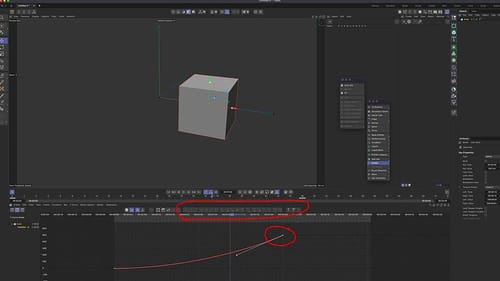I'll keep you posted, once they respond and have a chance to look into the issue.
Thanks, again, for your time.
Latest posts made by entry-newspaper
-
RE: 2026 Timeline Bugposted in Question & Answers
-
RE: 2026 Timeline Bugposted in Question & Answers
Interesting, thanks so much for continuing to investigate. It seems that there a number of ways to "wake up" those controls, but obviously, something is wrong; it's never behaved like that prior to 2026.
I'll open a ticket with Maxon, to let them do their thing. -
RE: 2026 Timeline Bugposted in Question & Answers
Being that it's the same issue, on two totally different machines, I figure it's more of a bug. But can I send you my custom layout file? Would that help to see if I did something weird, when I was laying out my preferred layout?
Independent of that, do I need to open a ticket with Maxon Support? -
RE: 2026 Timeline Bugposted in Question & Answers
Okay:
- Doesn't change anything.
- Also doesn't change, regardless of the project.
- This does work. More, below:
So, if I create a new keyframe (regardless of the property) it greys out those tools. But the moment I move the keyframe bezier handle, it immediately brings those tools to life. Or, like you suggested, by clicking on the "undock a copy" of the timeline.
But clearly, something is wrong. This exact same thing happens on both my M1 Ultra and M4 Max.
Is it possible that I did something weird when I customized my pallets? But even then, I set each machine up, independent of the other. In other words, I didn't copy and reuse the custom layout prefs. -
RE: 2026 Timeline Bugposted in Question & Answers
Ah, 500-pixels, thanks. And thanks for trying this on your end.
Here's my screen grab:

Just to make sure I'm describing this correctly, I can manipulate the keyframe / handle, it's all those other features (outlined in red) which don't become active, as they should. So, if I quickly highlight a keyframe, and want to zero the handle angle, I'm unable to do so.
-
RE: 2026 Timeline Bugposted in Question & Answers

I'm trying to load a 64k 960x540 jpeg. Something is wrong here...
-
2026 Timeline Bugposted in Question & Answers
Hi Dr. Sassi,
I'm wondering whether you can check on your M-Series Mac to see whether you can replicate an issue I've found with C4D 2026.
Specifically, in my timeline in F-Curve mode, when I select a keyframe handle, I'm NOT able to access any of the timeline tools. Quite the issue, to say the least.I've included a screen cap, where you can see how all of my icons are greyed-out, despite having the keyframe selected.
For what it's worth, I've included the basic project.This is happening on BOTH by M1 Ultra, and M4 Max MBP - each running C4D 2026 and OS 15.7.
Thank you!
P.S. Something seems to be wrong with the image host here. I keep trying to post a jpeg screen cap (only 1920x1080) and I keep being told that the "dimensions are too big".
-
RE: Double-click on 2026 project opens C4D2025posted in Question & Answers
Thanks, Dr. Sassi. I'll likely do just that. But doesn't it seem odd, that it would open an older version? I've never before seen that. No idea if that's some glitch in Cinema, or more likely the Mac OS?
-
Double-click on 2026 project opens C4D2025posted in Question & Answers
I just installed C4D 2026. It's on a machine with 2025 and 2023.
Oddly, when I double-clicked on a test project which had just been saved from 2026 (with C4D 2026 already being open, no less!) 2025 opened that file, instead.Any idea why that would occur? This is on my M1 Ultra, running 15.7 Sequoia.
-
RE: Quick Mograph Questionposted in Question & Answers
Thank you, Dr. Sassi.
I'll study these two projects, so I can incorporate the best method into the final project.
Have a pleasant weekend.